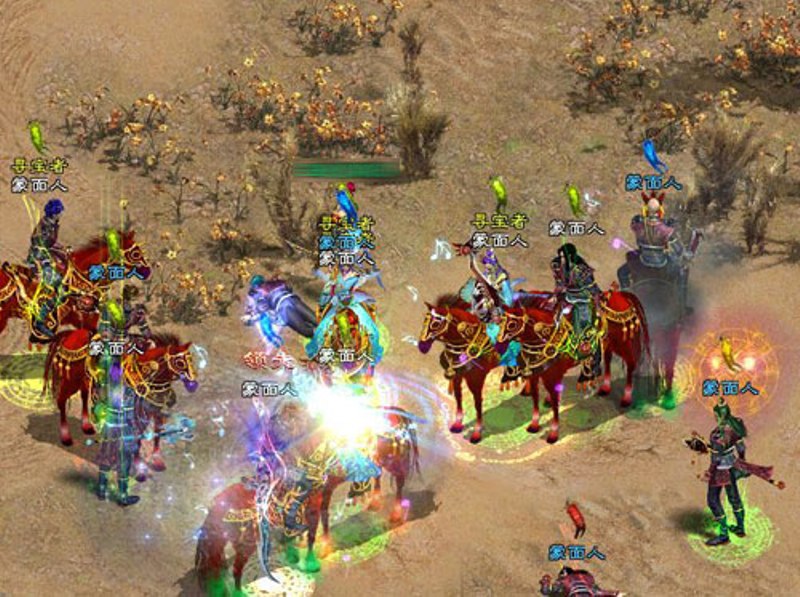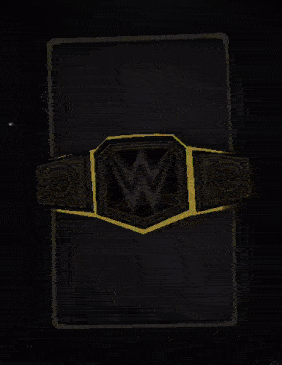· 11 min read
Are Loot Boxes The Future Of Mobile Game Monetization?
Harry Lawrence
Games Industry Analyst
In November 2017, EA released Star Wars Battlefront II, developed by DICE studio. The company was met with extreme criticism after it seemed to have not learned from its mistakes with its season pass approach in the first instalment. Famously, EA’s response to that criticism led to the most downvoted comment in Reddit’s history.
The reason EA’s response garnered so much negative attention was that it ignored the growing discontent over its use of loot boxes, an increasingly common monetisation strategy in the gaming industry. Though the strategy has been around for over a decade, the success of Blizzard’s Overwatch was a pivotal moment for the loot box model, vastly increasing its visibility and popularity.
It has only been in the past few years that the public dialogue has broadened to include parallels to gambling, and whether or not there is a need for regulation. In the same November, the Belgian Gaming Commission declared that loot boxes constitute a form of gambling (more on that later), an issue it is escalating to the European Commission. In China, Blizzard is now legally required to display the odds of receiving specific rewards alongside loot boxes in an effort to increase transparency.
So, what does the future of game monetisation look like? How do loot boxes fit into that picture? How will this affect the mobile gaming market? In order to answer these questions, we need to know the story so far. We need to understand what loot boxes are, their various forms, their benefits and drawbacks, and how they interact with the law.
[bctt tweet=”What does the future of game monetisation look like? How do loot boxes fit into that picture? How will this affect the mobile gaming market?” username=”GameAnalytics”]
What Are Loot Boxes?
One of the main objectives of MMOs like World of Warcraft is to have a digital representation of yourself that you can improve. There are two main ways of improving your character: gaining experience and upgrading items. But, because most games in this format have an intrinsic limit to the amount of experience you can reach, items have played a larger and larger role over time. Historically, as the desire for items grew, various “loot” systems developed to decide which players receive which items.
According to Vili Lehdonvirta, Associate Professor and Senior Research Fellow at the Oxford Internet Institute, loot boxes in their current format first appeared in a Chinese MMO called ZT Online around 2006 or 2007. At this time, the Asian market rested considerably on renting games rather than buying, or sometimes simply on outright piracy. Loot boxes were a way for Zhengtu Network, the game company, to ensure a reliable revenue stream. After the company posted an annual profit of 120 million yuan ($15.5 million at the time) in April 2007, other companies began to follow suit, including companies like Zynga, which posted an EBITDA of $56 million in 2017.

Another important landmark in the evolution of loot boxes was Valve’s Team Fortress 2. By now, games that were entirely free due to shifting monetisation onto microtransactions were not at all uncommon. After Valve brought Team Fortress 2 into this free-to-play arena, it introduced supply crates in 2010. Interestingly, this came at around the same time that then-General Manager of EA’s Easy Studio, Ben Cousins, pointed to Zynga as the future of the industry.
Today, loot boxes are redeemable virtual items that can be paid for either by buying them directly, or by investing enough time in a particular game to acquire enough virtual currency to pay for them. On its own, this is difficult to dismantle. But, the distinguishing feature of loot boxes is that their contents are determined by chance. As video games have traditionally focused on skill, a rift has formed between players, who want to reinstate values such as fair play, and developers, who want to make money.
The Difference Between Cosmetic And Power Loot Boxes
As mentioned, Overwatch has been particularly successful, both financially and critically. Yet, it makes use of a loot box system. So, why has Overwatch been successful, yet Battlefront II less so? The answer is that there are two types of loot box, and understanding the difference between them is at the heart of the current discussion.
The reason that the vast majority of players accept the loot box system in Overwatch is that all obtainable items are cosmetic, in that they have no effect on gameplay itself. As a result, there is no incentive to purchase a large number of loot boxes – whether with virtual currency or real – because value can acquired by selling duplicates or from boxes found at random.

In Battlefront II, on the other hand, the loot boxes that were designed served a certain function. The original idea was that players could acquire and use Star Cards, a form of virtual currency. Star Cards would provide advantages, such as boosts to various character classes within the game. It followed that, by spending more on loot boxes – which players would have been heavily incentivised to do – they could essentially pay to win, a phrase that has become derogatory for some gamers.
Are Loot Boxes Good Or Bad?
There is a lot to consider when looking at the ethics of loot boxes. It is important to remember that there are several parties involved in monetisation. There are the players, the end user for video games. There are the game developers, who physically make the games. Then there are publishers, who bridge the gap and sell those games. Whether or not loot boxes are ethical depends on whom you ask.
Despite EA making the decision to backpedal on the loot box system in Battlefront II merely hours before the game officially launched, many felt that the company had already shown its true intentions and had crossed a line. In the aftermath, the outcry from players became so large that the issue reached mainstream news. Some politicians picked up on the possibility of the relationship between loot boxes and gambling, and began to acknowledge it at an issue that could have serious consequences if not placed under the microscope.
Chris Lee, a Democratic member of the Hawaii House of Representatives, called Battlefront II “a Star Wars-themed online casino, designed to lure kids into spending money.” He called for the regulation of loot boxes under Hawaii’s gambling laws, and became an advocate for the case that loot boxes should be treated in the same way as gambling machines (i.e. that they should be usable only by those 21 and over).

At the end of January, Hawaii House Bill 2686 was put forward, which (in brief) is an attempt to ban sales of games that utilise loot boxes to those aged 21 and under. On its surface, this seems like a good idea. But, while there are parallels between loot boxes and gambling, we must entertain the possibility that equating them is an oversimplification. In some states in the US, gambling is illegal to both enable and participate in. This means that in states where this legislation recognises that, game companies and players would be breaking the law by using loot boxes.
Game companies that use microtransactions have actively distanced themselves from the term ‘gambling’, based on the lack of ability for users to convert their virtual items or currency into real-world currency. With the introduction of legislation that equates loot boxes with gambling, however, does it not follow that virtual earnings must be considered to have real-world value? This raises some tough questions. What happens if players discover a method of creating items themselves? Do those items have value? Would game companies be breaking the law by removing them? How could a game server possibly be shut down? Would every player need to be reimbursed individually?
On the other hand, it is indisputable that some loot box systems exist that use psychological research to exploit at least some players into parting with cash when we know that games can be made without it. But, it is clear why this trend has emerged: competition. As Newzoo’s quarterly marketing reports show, mobile gaming is on the rise, and traditional AAA game companies have faced a declining market share. The incentive for publishers to forego ethical concerns in the name of revenue has increased. After all, this is what happened with ZT Online.

While cosmetic loot boxes were, for a time, the go-to secret weapon for game companies to overcome competition, there seems to be a consensus that the line should be drawn at loot box systems that hide power within crates. A universal value that underpins gaming as an art form is that of fair play, and so power loot box systems undermine gaming itself. This is why there has been growing hostility from players, and this is why more people than ever are discussing the future of monetisation.
What Does The Future Look Like?
Regardless of the loot box controversy, the mobile gaming market is booming. In its most recent Global Games Marketing Report, Newzoo revised its mobile gaming revenues forecast for 2017 to $50.4 billion, and to $72.3 billion for its 2020 forecast. In January, the mobile game developer behind WWE Champions Scopely sought a further $125 million of financing, which would raise the company’s value to $795 million. These are huge numbers, and it’s clear that they are only destined to become larger. Just as it depends whom you ask about whether or not loot boxes are ethical, it depends on whom you ask about what the future of monetisation looks like.

One school of thought suggests that loot boxes have a place in the future, but will follow in the footsteps of Overwatch and trend back towards cosmetics. Wedbush Securities analyst Michael Pachter believes this. “You didn’t hear anybody complain about Destiny or Overwatch, which is ongoing and doing $100 million a quarter in microtransactions,” he said. “I think there’ll be a tilt back towards cosmetic stuff. People like to dress their characters in outfits. People will buy them.”
Another possibility for the future of monetisation is a new, as-yet undeveloped model. There was a time without loot boxes, and we may simply be living in the time without the new model. When World of Warcraft was released for the first time, it implemented a subscription model. While the company stopped providing data on subscription numbers, it is clear that the number is somewhere in the millions. The subscription model still has its place in the global market.
[bctt tweet=”Industry analysts agree that loot boxes are here to stay. There is simply too much revenue to be made, especially in the face of such severe market competition. Are they the future of microtransactions in mobile games?” username=”GameAnalytics”]
Speculation aside, there are concrete signs of a change in the tone of the current conversation. In December 2017, Apple changed the conditions that loot boxes games have to meet to appear in the App Store. Loot box games must now, as in China, disclose the probabilities of receiving rewards from loot boxes, so that players can make more informed decisions. In addition, Far Cry 5 – a heavily anticipated game being released at the end of this month – will not feature loot boxes. The AAA game will use microtransactions, but only for cosmetic items.
Just as majority of players feel that loot boxes are a negative trend and that the line should be drawn clearly at cosmetic enhancements, most industry analysts agree that loot boxes are here to stay. There is simply too much revenue to be made, especially in the face of such severe market competition.